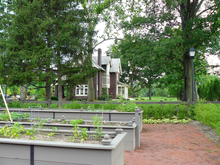I recently moved to a home with heavy clay soil that does not drain well. I'm thinking my best course of action might be to build some raised beds filled with better draining soil, rather than trying to make the existing soil more hospitable to plants.
If I want to plant perennials in these raised beds, how high and wide would I need to make them in order for plants to overwinter well? Which plants will perform well in clay soil that does not drain well? I'm also hoping I can plant directly in the ground instead of in a raised bed.
You can build raised beds, but you are right to question how well perennial shrubs like hydrangeas will do in winter being that their roots are above ground.
Soil in raised beds can freeze quickly, stressing the plant roots, while plants in the ground are subject to more gradual freezing. This allows the plants to gradually move into dormancy for winter. Raised beds are great for annual flowers and vegetables.
Choosing plants that grow well in your current site conditions is the key to a healthy and long-lived landscape that looks great. Start by submitting a soil sample to the UMN Soil Test Lab, so you know as much as possible about your soil and get some recommendations on amending it.
Before planting, amend your soil. It is easier to do this before putting plants in the ground than afterward. For heavy clay soil, compost will likely be recommended to add air and improve drainage. Both air and drainage help create a good growing environment for plant roots.
You can purchase bagged compost or bulk compost. Use a tiller or at least a garden fork and work the compost into the existing soil by digging and turning the soil, breaking up the clumps as they emerge.
When it comes to selecting plants, take a look at how to best do this by watching our video series: Right Plant, Right Place.



